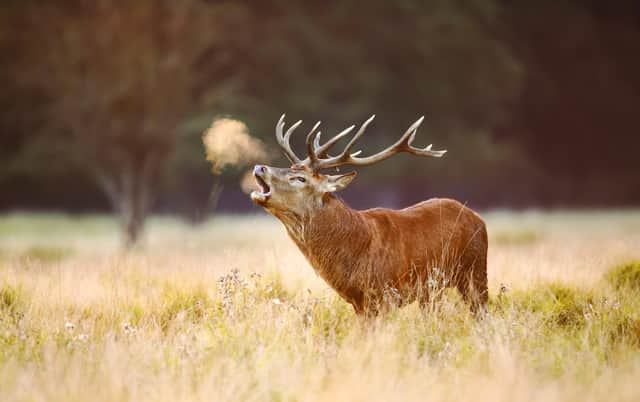Autumn travel: Red alert in hills and glens


Autumn is time for the annual deer rut, the mating season, when the macho stags battle for dominance and access to the hinds.
Jamie Hammond, the regional deer operational delivery manager for NatureScot, says for those who want to witness a clash between rival males, following the sound can be the best bet.
Advertisement
Hide AdAdvertisement
Hide AdHe says: “The noise that they make will often give their position away, but while the stags might have their minds on other things, the hinds will stay vigilant.
“They are crepuscular, so active at dawn and dusk, while they might hide in woodland where available, at these times they are more likely to come out into the open areas to feed.”
He adds: “In winter, they will come lower, and in summer they will go higher – to be near water, avoid flies and midges and to find mud as they are quite keen on a mud bath.
Some of the biggest wild red deer stags are in Galloway, Islay and Arran in terms of body weight, while they tend to be smaller in Sutherland where there is a more hostile environment.
Mid-September sees the beginning of the rut, and Hammond says: “The roaring of the stags is a classic image of the Highland Glen and if people haven’t heard it, it is spine-tingling.
“The grunts and the roars are to ward off rivals and to pit one against the other. Antler size, body size and who is the loudest will intimidate opponents – it is all about who is the biggest boy on the block.”
Such loud posturing doesn’t always lead to a fight, Jamie maintains. “There is a degree of showmanship, one will pace left to right, another will match that in parallel lines. They will glare and roar but if that hasn’t resolved it, they will do battle in spectacular style.”
Red deer antlers are incredible weapons and are one of the fastest growing living tissues in the animal world, forming in about four months. They regrow every year covered in a protective velvet, which is then rubbed off ready for seasonal fighting.
Advertisement
Hide AdAdvertisement
Hide AdThe number of tines broadly relates to the age of the animal. Jamie explains: “In the prime of life – from eight to ten years old – that is when you see the type of stag in Landseer’s Monarch of the Glen. One with 12 tines, six on each side, is known as a Royal Stag.”
The rut is over by late October, with calves born in May or June. At first, the wee ones are kept hidden in vegetation before they are fully mobile, so it is important that a lone calf is never approached.
Red deer are a combination of browser and grazer, according to Jamie. “In winter, there is heather which forms quite a big part of their diet because they can knock the snow off. By spring, you have fresh flushes of grasses and different species of young trees and woodland plants – bramble, honeysuckle and bluebells are highly palatable.”
Agricultural crops are very attractive too, but with huge potential for damage to farming and forestry. Hence the need for population control, Jamie expands: “The reality is that deer are an intrinsic part of our landscape and are of literal, social and economic value, but they don’t have predators and their numbers need to be controlled.”
“It may be that there are too many deer in some places, but not enough in others, so managing them is all about managing their impact.
“For forestry, farming and our more sensitive habitats, such as grasslands and rare woodland or bogland, we need to find a balance against the backdrop of environmental protection, conserving our biodiversity and being aware of climate change. Hence the need to manage them in a nuanced way, whether that is deer eating fields of barley in lowland Perthshire, all the way through to parts of Sutherland.
“Even a small number of deer, along with other herbivores, such as sheep, can have a huge effect on sensitive habitats.”